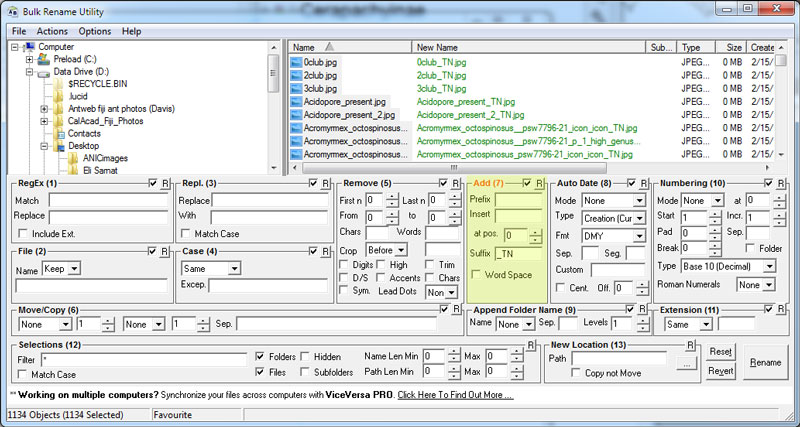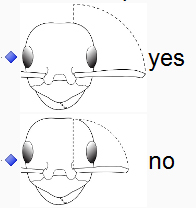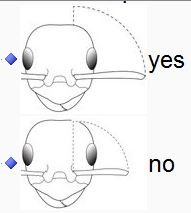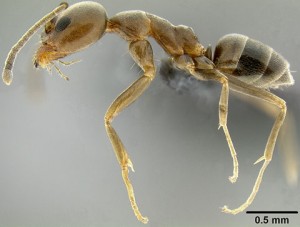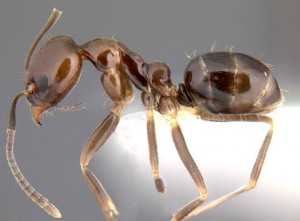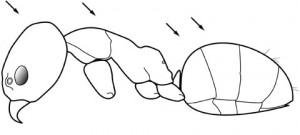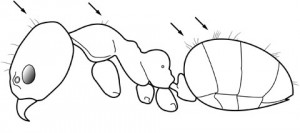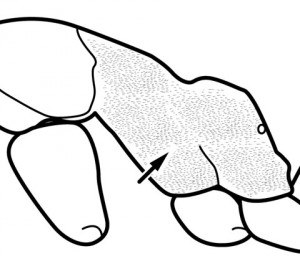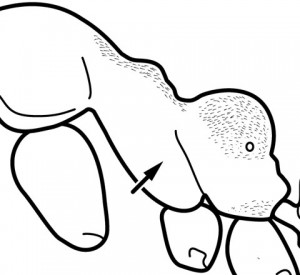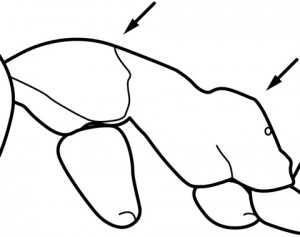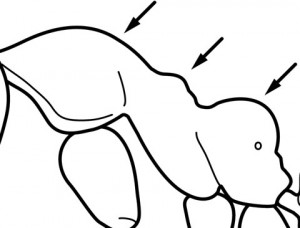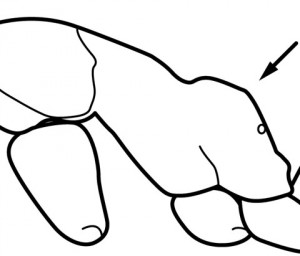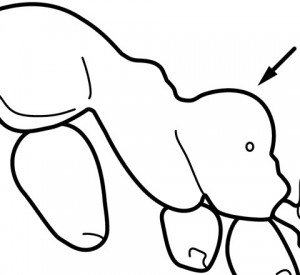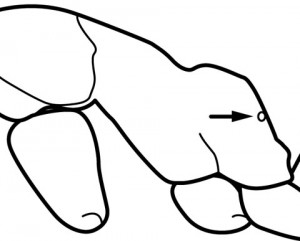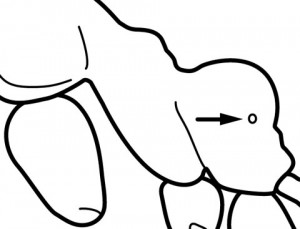I’m working with Evan Economo and one of his students on putting together a checklist for the ants of the Solomon Islands. I thought it would be a good opportunity to record my workflow in case I do one of these again, and in case someone else is looking to do a similar project.
The proximate goal of this exercise it to produce a species list for Antweb. Down the line though, we also want to publish the checklist to make it easier for future researchers to do a thorough survey of the Solomons, and also to help broaden the global knowledge of ant species distributions.
A checklist is all about the names. The names are coming from three primary pools: (1) specimens we collected in the field, (2) specimens we’ve examined in museum collections, and (3) species occurrences published in the literature.
To begin with, I download the example species list (Excel) that is available on Antweb. (It is also worth reading the accompanying documentation.)
It’s really only necessary to fill out the following columns: Subfamily, Genus, SpeciesName, Species Author Date. For a really solid checklist, though, it’s also nice to have the page number of the original description. For example “Emery, 1897: 581”. And remember, if the species was originally described under a genus different from the current one, the author and date go in parentheses “(Emery 1897): 581”.
Next, I insert a bunch of columns after ‘Species Author Date’ and label them, Source1, Source2, Source3, etc. These columns will serve to record what sources each species occurrence is drawn from.
I also add a new worksheet that I name ‘Sources’ which I use to compile the full citations for all the literature records, websites, etc. from which I will be pulling species occurrence records.
Antbase Distribution Database
A good way to generate a base list of species for a given country is the Antbase Distribution Database. This will generate a list of all species with type specimens from the country, in addition to an assortment of names retrieved from other online databases. Unfortunately, there is no way I know of to easily determine where these latter records come from. In order to verify them (and find records that HOL might have missed), we must use other online resources.
Hymenoptera Online (HOL)
The next names I add are from previous literature records. The most significant publication was Mann’s 1919 Ants of the Solomon Islands. In order to generate a species list from Mann (1919), I search for the author in Antbase.org, and then click the citation link. This takes me to the Hymenoptera Online (HOL) page for Mann (1919). The ‘Taxon citations’ window lists all the names reported in that publication, with links to the online citations for the original descriptions.
I then copy the list and paste it into a new worksheet labelled ‘Mann, 1919’. Since this is my first source, I add ‘Mann, 1919’ and the full citation to the ‘Sources’ worksheet.
Now it’s time to cross-check the master species list I’ve generated with the Mann (1919) list. If the name is already on my master list, I add ‘Mann, 1919’ next to it in the ‘Source1’ column. If the name is not on the master list, I add it in and mark the source.
CAUTION: it looks like the names in the HOL ‘Mann, 1919’ list include species Mann includes in some of his keys that do not occur in the Solomons. The only way to catch these discrepancies is to look at the publication, itself. So once again, there is no substitute for human eyeballs and original publications.
AntCat
Many of the names that appear in Mann (1919) have either been transferred to a different genus or have been synonymized with an older species name. This requires me to cross-reference each of Mann’s species names with the current nomenclature using AntCat (which is more up-to-date than HOL). I type the old name into the search box and see whether it is valid, has been transferred to another genus, or is a junior synonym or homonym of an older name. If these names correspond to valid names that are not already on my list, I add them in making sure to copy the species author (author of the original description) and date into the ‘Species Author Date’ field. As I mentioned before, I’m also including the page number of the species description.
FORMIS
Now for the obscure literature records. To find these I use FORMIS. As an Endnote user, I make sure I have the most recent edition of FORMIS and open the library. I’ll make a new ‘group’ on the lefthand sidebar called ‘Solomon Island records’. Then I’ll type ‘Solomon Is’ into the search box to hopefully get a list of all (or nearly all!) published ant literature that mentions the Solomon Islands in the title, abstract or keywords. If it is relevant, I’ll add it to the new ‘Solomon Island records’ group I made. For each relevant citation, I’ll make a new worksheet tab in my Excel workbook and rename it with the author-date.
References with species lists for the region
The easiest papers to mine are restricted to the Solomon Islands, and have a list of species separated by semicolons in the abstract or keywords. If this is the case, I copy the names to the appropriate Excel worksheet tab. I’ll use the ‘convert text to columns’ feature to make each name populate a different column in ‘Row 1’. Then I’ll select all the names and copy them to the clipboard. Next I click on Cell 2A and then use the ‘paste special’ feature and select ‘transpose’. Now all the names are on different rows. Delete Row 1.
Once again, these names need to be vetted with AntCat to make sure they are valid. If not, I change them to the valid name. If the name is new to my master list, I add it, making sure to fill in all the appropriate fields, including the ‘Source’ field.
Other references
Other references will require more thorough searching. Global or larger-scale geographic revisions are an example of this type. For these, I will try and get a pdf of the article. If it is an older one, I’ll use the ‘OCR text recognition’ feature available in Adobe Acrobat to convert the pdf images into readable text. Then I search the text for ‘Solomon’, to see which species were collected from the Solomon Islands. These, too, I will add as new names to the master list if they were not there already, or add the citation to a ‘Source’ column.
Bolton’s Catalog
Another resource for mining locality info is the PDF version of Bolton’s Catalog that is (as of this post) being periodically updated on the Global Ant Project site. By searching for ‘Solomon’ we can retrieve all species for which the Solomon Islands serves as the type locality.
Specimens we collected
The next names and records I incorporate into checklist are from specimens that we collected ourselves in 2008. We identified and compared these with type material and determined specimens at the USNM. Next to these names, I add ‘EMS/EPE, 2008’ in the appropriate ‘source’ column.
This project is on hiatus for awhile, but I hope to return to it in the near future, and will update this posting when I do!

